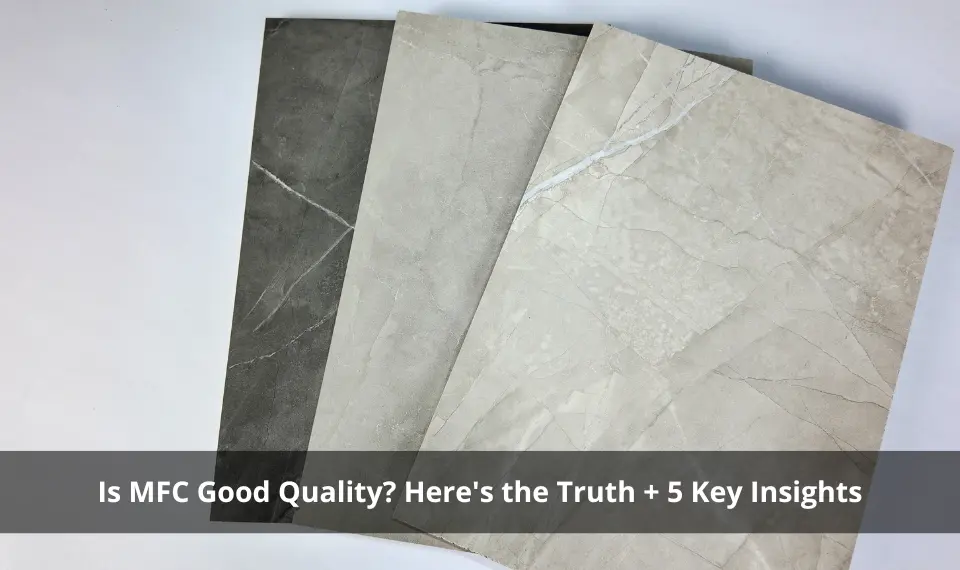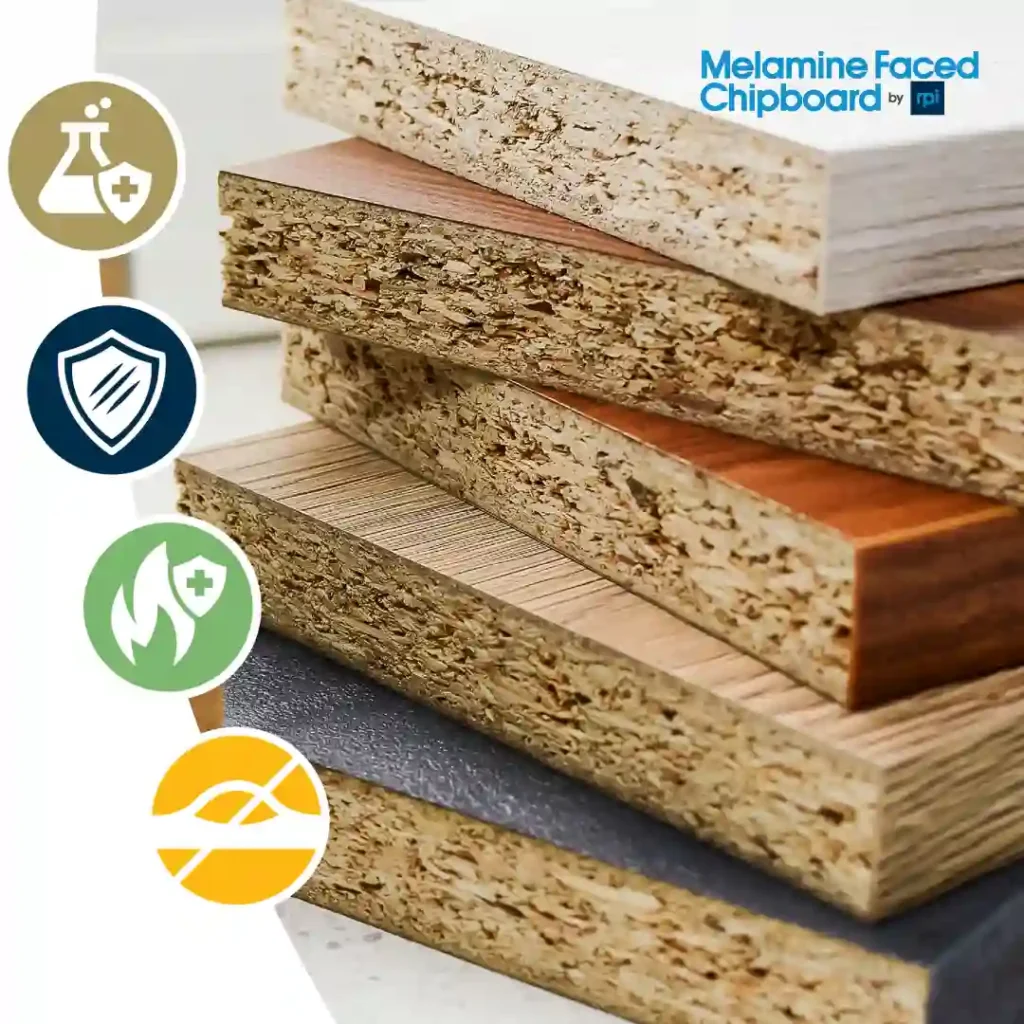Apakah MFC berkualitas baik? Ini adalah pertanyaan umum di kalangan pemilik rumah, arsitek, dan pembuat furnitur yang mencari keseimbangan antara estetika, ketahanan, dan efisiensi biaya. MFC (Melamine Faced Chipboard) banyak digunakan dalam pembuatan lemari, lemari pakaian, furnitur kantor, dan rak. Namun, apakah MFC merupakan pilihan berkualitas tinggi dibandingkan dengan bahan lain?
Dalam artikel ini, kita akan membahas faktor-faktor yang menentukan kualitas MFC, perbandingannya dengan bahan lain, dan apa yang membuat produk MFC tertentu menonjol.
Apa Itu MFC dan Mengapa Begitu Populer?
MFC merupakan singkatan dari Melamine Faced ChipboardPapan ini dibuat dengan cara menekan partikel kayu bersama resin, kemudian permukaan papan dilapisi dengan kertas dekoratif yang diimpregnasi melamin. Hasilnya adalah papan dengan struktur yang konsisten dan permukaan yang keras serta menarik.
Mengapa MFC Banyak Digunakan:
- Terjangkau tanpa mengorbankan estetika visual.
- Tersedia dalam berbagai warna, tekstur, dan efek serat kayu.
- Mudah diproses dan potong ke ukuran khusus
- Kompatibel dengan pemasangan tepi dan aksesori.
Karena keseimbangannya antara desain dan fungsionalitas, MFC telah menjadi bahan pilihan utama dalam furnitur baik untuk hunian maupun komersial.
Apakah MFC Dianggap Berkualitas Baik?
Ya. MFC dapat memiliki kualitas tinggi, terutama ketika diproduksi dengan bahan inti yang padat dan seragam serta permukaan melamin yang tebal dan tahan lama.
Faktor-faktor yang Mempengaruhi Kualitas MFC:
- Kepadatan Papan: Kepadatan yang lebih tinggi berarti integritas struktural yang lebih kuat dan kemampuan menahan sekrup yang lebih baik.
- Permukaan MelaminLapisan melamin yang lebih tebal dan padat memberikan ketahanan yang lebih baik terhadap goresan atau kelembapan.
- Tingkat Emisi: MFC berkualitas tinggi memenuhi standar emisi formaldehida rendah (E1 atau CARB P2).
- KonsistenPermukaan halus, tidak melengkung, dan ketebalan yang konsisten merupakan tanda-tanda produksi presisi.
- Ketahanan dalam Penggunaan: Tahan terhadap keausan sehari-hari di lingkungan rumah atau kantor.
Bagaimana MFC Dibandingkan dengan Bahan Lainnya
Saat membandingkan MFC dengan MDF, papan lapis, atau kayu solid, masing-masing memiliki kelebihan dan kekurangan. Berikut ini yang membuat MFC menjadi pilihan yang solid:
- MFC Vs MDFMFC seringkali lebih terjangkau dan memiliki permukaan yang sudah selesai, sementara MDF mungkin memerlukan laminasi tambahan.
- MFC Vs PlywoodPlywood lebih kuat untuk keperluan struktural, tetapi MFC menawarkan konsistensi yang lebih baik dan permukaan yang lebih halus.
- MFC vs Kayu SolidKayu solid adalah bahan premium dan alami, tetapi lebih mahal dan rentan terhadap penyimpangan bentuk jika tidak diolah.
Tips untuk Memastikan Anda Mendapatkan MFC Berkualitas Tinggi
Tidak semua MFC diciptakan sama. Berikut cara memilih yang baik:
1. Periksa Sertifikasi
Cari sertifikasi seperti E1, E0, atau CARB P2 yang menunjukkan tingkat emisi yang aman.
2. Periksa Permukaan
Papan MFC yang baik harus memiliki permukaan yang bersih, tahan gores, tanpa gelembung atau pengelupasan.
3. Uji Inti
Jika memungkinkan, periksa apakah inti papan padat dan seragam tanpa rongga besar atau bagian yang lembek.
4. Tanyakan tentang Standar Pabrikan
Merek atau produsen terkemuka biasanya memiliki sistem kontrol kualitas yang lebih baik dan sumber bahan baku yang lebih terpercaya.
5. Menilai Kesesuaian Aplikasi
Gunakan MFC berkualitas tinggi untuk area yang membutuhkan ketahanan, seperti lemari dapur, lemari pakaian, atau penggunaan komersial.
Mengapa RPI MFC Menonjol dalam Kualitas
PT. Rimba Partikel Indonesia (RPI) memproduksi MFC berkualitas tinggi menggunakan bahan baku yang dipilih dengan cermat dan teknologi produksi modern. Dengan rekayasa presisi, papan inti padat, dan laminasi melamin bertekanan tinggi, RPI memastikan konsistensi, ketahanan, dan keunggulan desain.
Apakah Anda seorang desainer, kontraktor, atau pembuat furnitur, jajaran produk MFC dari RPI menawarkan tampilan yang Anda inginkan dan performa yang Anda butuhkan.
Mencari bahan MFC berkualitas tinggi? Hubungi kami hari ini:
Email: adminrpi@rimbapartikel.com
WhatsApp: +62 811-2679-094
Kesimpulan: Apakah MFC Berkualitas Baik?
Ya. MFC adalah bahan berkualitas tinggi jika dipilih dari sumber terpercaya dan diproduksi dengan standar tinggi. Kekuatan, tampilan, dan harganya yang terjangkau menjadikannya pilihan ideal untuk furnitur dan lemari modern.
Pilih MFC premium RPI untuk memastikan proyek Anda memenuhi standar kualitas dan finishing tertinggi.


